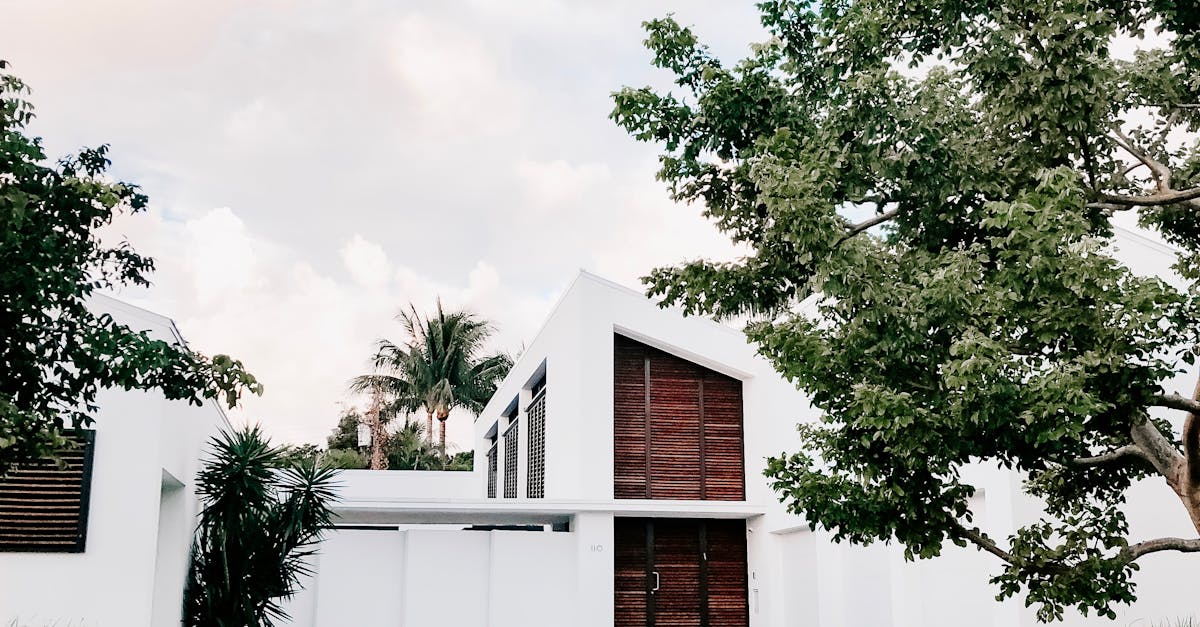
Table Of Contents
Historic Preservation
Historic preservation plays a crucial role in maintaining the cultural identity and heritage of a city. In the context of urban design, it involves safeguarding historically significant buildings, sites, and districts from deterioration or demolition. Design Concept Development in Cornwall recognizes the importance of heritage conservation, as these historic elements contribute to the character and charm of the city.
Preserving heritage buildings not only celebrates the past but also enriches the present urban landscape. By integrating historic structures into new development projects, Design Concept Development in Cornwall creates a harmonious blend of old and new. This approach fosters a sense of continuity and respect for the city's history, ensuring that future generations can appreciate and learn from the architectural legacy of Cornwall.
Heritage Building Protection
Heritage building protection plays a crucial role in the preservation of architectural and cultural treasures within urban landscapes. In St. Thomas, as in many cities across Canada, there is a concerted effort to safeguard the historical significance of buildings while also ensuring their integration into modern design concepts. Design Concept Development in St. Thomas places emphasis on maintaining the authentic character of heritage structures through careful restoration and adaptive reuse, thereby contributing to the city's unique identity and sense of place.
By implementing strict regulations and guidelines for the protection of heritage buildings, St. Thomas aims to prevent the loss of its historical heritage while fostering sustainable urban development. Through collaborative efforts between city officials, architects, and developers, initiatives are undertaken to balance the need for modernization with the preservation of the city's architectural legacy. Design Concept Development in St. Thomas encourages innovative approaches that celebrate the past while embracing the future, resulting in vibrant urban spaces that honour the city's rich history.
Transportation Planning
Transportation planning plays a critical role in the development of urban areas, ensuring efficient movement of people and goods within the city. In St. Thomas, as in many urban centres, the emphasis is shifting towards sustainable modes of transportation to reduce congestion and greenhouse gas emissions. The integration of various modes of transit, such as buses, bike lanes, and pedestrian walkways, is essential to creating a well-connected and accessible city for all residents.
Design Concept Development in St. Thomas focuses on creating a transportation network that prioritizes safety, accessibility, and sustainability. By incorporating bike lanes and walkways into the urban fabric, the city aims to promote active transportation and reduce reliance on private vehicles. Furthermore, initiatives such as mixed-use developments that combine commercial and residential spaces help create vibrant communities where residents can live, work, and shop within walking distance, ultimately reducing the need for long commutes.
Bike Lanes and Walkways
Design Concept Development in St. Thomas prioritizes the integration of bike lanes and walkways within urban areas. The goal is to create a more sustainable and accessible environment for residents and visitors alike. By implementing designated lanes for cyclists and pedestrians, the city promotes a healthier lifestyle and reduces traffic congestion.
Bike lanes and walkways not only enhance the aesthetic appeal of a city but also contribute to a sense of community. Residents can safely and comfortably navigate through the urban landscape, fostering a more active and engaged population. Designing streets with an emphasis on pedestrian and cyclist safety is essential in creating vibrant and livable neighbourhoods within St. Thomas.
MixedUse Development
Mixed-use development is a fundamental aspect of urban design that aims to integrate different types of activities within a single area. This approach enhances walkability, reduces the need for long commutes, and fosters a sense of community. In St. Thomas, the concept of mixed-use development is gaining prominence as a strategy to create vibrant and sustainable neighbourhoods that cater to diverse needs. Design Concept Development in St. Thomas is focused on harmonizing commercial and residential elements to establish lively spaces where people can live, work, and play seamlessly.
By combining residential units with commercial spaces, mixed-use developments in St. Thomas offer convenience and accessibility to residents. These communities often feature amenities such as shops, restaurants, parks, and offices within walking distance, promoting interaction among residents and supporting local businesses. Design Concept Development in St. Thomas considers the balance between various land uses to ensure that the urban fabric remains dynamic and inclusive. This approach not only enhances the quality of life for residents but also contributes to the overall economic and social vitality of the city.
Commercial and Residential Integration
Commercial and residential integration is a crucial aspect of urban design that aims to create vibrant and sustainable communities. In Design Concept Development in Peterborough, the focus is on blending commercial and residential spaces seamlessly to enhance the liveability and functionality of the urban environment. By strategically combining these two components, cities like Peterborough can promote a sense of community, foster economic growth, and provide residents with convenient access to amenities and services within walking distance.
In Peterborough, the integration of commercial and residential spaces emphasizes the importance of mixed-use developments that cater to the diverse needs of the population. This approach not only fosters a sense of place and social interaction but also promotes walkability and reduces reliance on cars, thus contributing to a more environmentally friendly urban landscape. By incorporating commercial establishments such as shops, restaurants, and offices into residential neighbourhoods, Design Concept Development in Peterborough aims to create vibrant and dynamic urban spaces that offer residents a range of services and activities right at their doorstep.
FAQS
What is urban design?
Urban design is the process of shaping the physical setting for life in cities, towns, and villages. It involves the arrangement and design of buildings, public spaces, transport systems, services, and amenities.
Why is historic preservation important in urban design?
Historic preservation is important in urban design to maintain the cultural heritage of a place, conserve historical buildings and landmarks, and ensure continuity with the past in the present urban development.
How does heritage building protection contribute to urban design?
Heritage building protection plays a crucial role in urban design by conserving buildings of historical, cultural, and architectural significance, enriching the urban fabric, and fostering a sense of place and identity.
What is the significance of transportation planning in urban design?
Transportation planning is essential in urban design to create efficient, sustainable, and accessible transportation systems that promote connectivity, reduce congestion, enhance mobility, and improve the quality of urban life.
How do bike lanes and walkways contribute to urban design?
Bike lanes and walkways enhance urban design by providing safe and convenient routes for cyclists and pedestrians, promoting active transportation, reducing reliance on cars, and creating healthier and more livable cities.
Why is mixed-use development important in urban design?
Mixed-use development is important in urban design as it promotes diverse land uses, fosters vibrant and walkable neighbourhoods, encourages social interaction, supports local businesses, and reduces urban sprawl.
How does commercial and residential integration contribute to urban design?
Commercial and residential integration in urban design creates dynamic and balanced neighbourhoods by combining different functions, promoting live-work-play environments, supporting economic vitality, and enhancing the overall urban experience.






